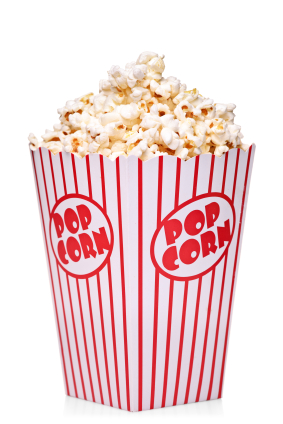 I recently came across an article focused on defunct exhibits at Disney parks. I’m a native Floridan so I flipped through the accompanying slide show with fond memories. And there it was...my all-time childhood favorite—Horizons at Epcot Center. From the robot butler to the holographic telephone, Horizons revealed a future full of promise, excitement, and funky monotone jumpsuits.
I recently came across an article focused on defunct exhibits at Disney parks. I’m a native Floridan so I flipped through the accompanying slide show with fond memories. And there it was...my all-time childhood favorite—Horizons at Epcot Center. From the robot butler to the holographic telephone, Horizons revealed a future full of promise, excitement, and funky monotone jumpsuits.
It’s been 30 years, the future is now the present, and I don’t have a robot butler. Disappointing yes, but on the other hand, we do have the Roomba and I will argue Apple’s FaceTime is likely better than a hologram. So I think we can agree many companies have made serious innovations in the last few decades—they’ve understood that incremental change means incremental growth, and they’ve pushed the limits. Although product development is critical for companies to compete and grow, it also carries high risks, because it represents a big investment into new and unfamiliar territory—it’s crucial to get it right.
While we aren’t all Imagineers, there are strategies for new product and service development that have proven successful in a rapidly changing market—these strategies form the basis of our Best Practices in New Product Development. Two of these Best Practices are below:
-
Use advanced techniques that emulate real world trade-offs: In real life, people don’t evaluate the importance of individual features or attributes. They make choices between/among products. The more closely research emulates this process, the more accurate the findings will be. What people say they prefer, and what they actually choose, are often not the same thing. That’s why we use trade-off techniques (e.g., discrete choice) that let us derive the most important and relevant preferences as well as sophisticated data mining techniques that help us to create more accurate predictive models.
-
Build flexibility into the research: If you’re using trade-off techniques, channel Walt Disney himself (“if we can dream it, we can do it”) by including features that fall outside of current capabilities. This lets you mimic the current market and simulate a future market where these feature become available. So while you might not be ready to “do it,” if you’ve dreamed it, you can test it! That’s why, when appropriate, we build a user-friendly simulator. These simulators allow design decision-makers to run “what if” scenarios, providing additional insight when changes occur (e.g., a competitor responds with a new product, prices change, or when the technology to realize your stretch features catches up with your dreams).
We can’t promise your product development research will live as long as Horizons (16 magic filled years) but we can help ensure it’s useful for both the short and longer-term (at least until we all get our robot butlers). Check out the video below to learn how we help our make sure their new product development efforts are a success:
CMB New Product and Service Development from CMBinfo on Vimeo.
Athena is a Project Director at CMB, she looks awesome in a jumpsuit and is patiently waiting for her favorite Disney character, Donald Duck, to make a comeback.


 A few weeks ago, I found myself seated at a trendy Mexican restaurant in Minneapolis, an eager participant at one of the more enjoyable business lunches I’ve encountered lately. As you might expect, the topic quickly turned from the vagaries of the marketing life to the weather, summer vacation stories, the gym, far-too-early holiday planning (I’m looking at you, Target), and then, unexpectedly, to dieting. It was there where I learned
A few weeks ago, I found myself seated at a trendy Mexican restaurant in Minneapolis, an eager participant at one of the more enjoyable business lunches I’ve encountered lately. As you might expect, the topic quickly turned from the vagaries of the marketing life to the weather, summer vacation stories, the gym, far-too-early holiday planning (I’m looking at you, Target), and then, unexpectedly, to dieting. It was there where I learned 


 Earlier this month I had the chance to present at the
Earlier this month I had the chance to present at the